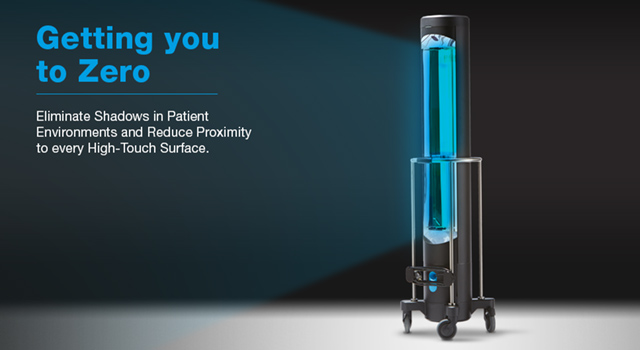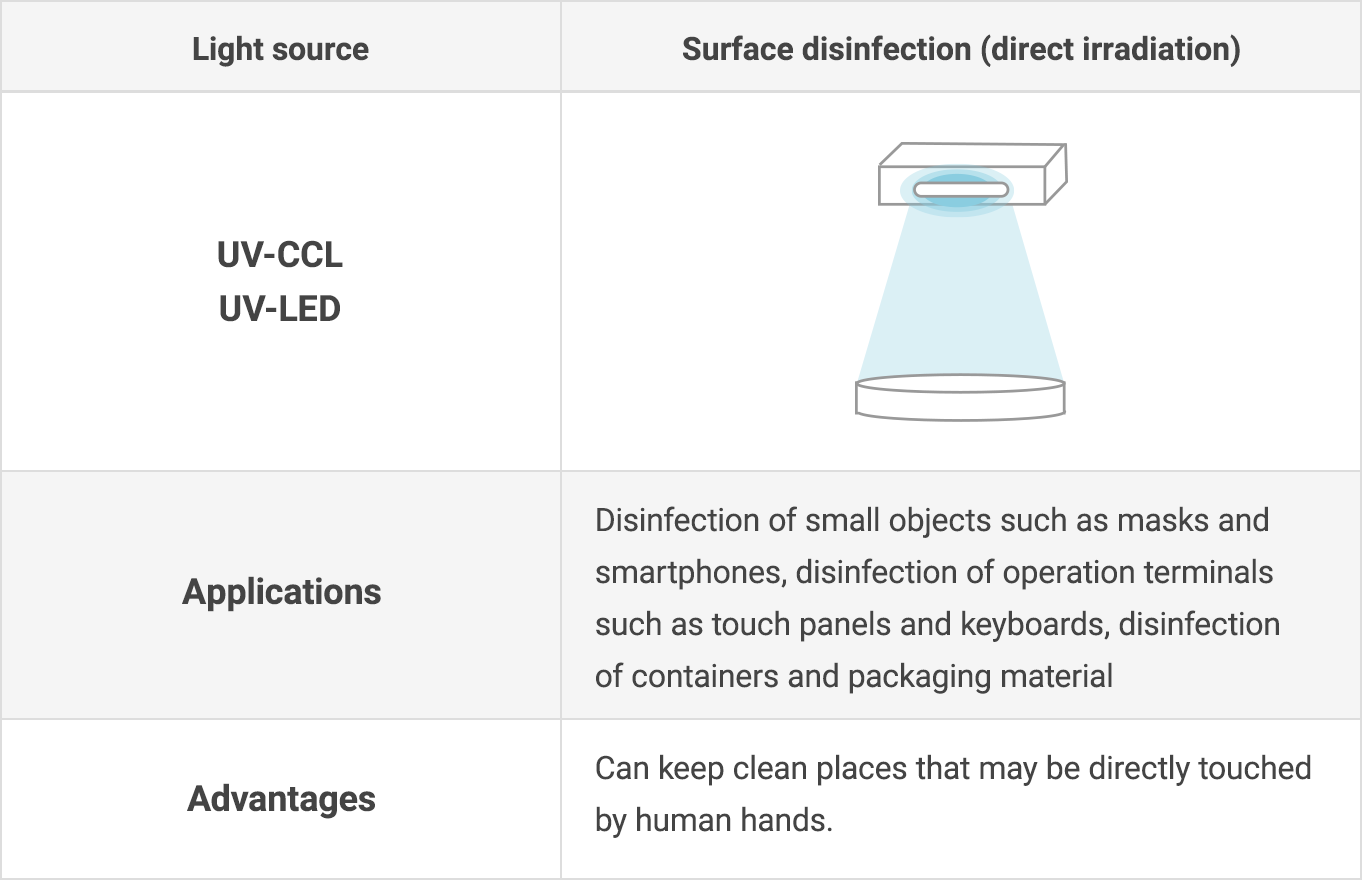Future-Proofing Your Space: Integrating UV Surface Disinfection for Ongoing Protection
Future-Proofing Your Space: Integrating UV Surface Disinfection for Ongoing Protection
Blog Article
Taking Advantage Of the Prospective of UV Disinfection: Shielding Health And Wellness and Hygiene
UV disinfection, a modern technology widely utilized in numerous industries, has proven efficient in removing hazardous microorganisms. From recognizing the mechanisms at play to executing this innovation in our day-to-day lives, this discussion aims to drop light on the possibility of UV sanitation and its role in protecting our health and wellness and health.
Recognizing UV Sanitation
UV sanitation is a very effective and widely utilized technique for getting rid of harmful pathogens and making certain wellness and health. This strategy makes use of ultraviolet (UV) light to inactivate microbes by damaging their DNA and preventing them from replicating. UV sanitation is specifically reliable versus microorganisms, infections, and other microorganisms that can cause infections and conditions.
The principle behind UV disinfection is simple yet effective. When UV light is released at a details wavelength, it passes through the microbe's cell wall surface and disrupts its hereditary material. This procedure, referred to as photodissociation, leads to the development of thymine dimers, which prevent the microbe from reproducing and making it harmless. UV disinfection can be used in different settings, including water treatment plants, medical care centers, food processing industries, and air filtration systems.
One of the benefits of UV disinfection is its capacity to successfully and efficiently remove a variety of pathogens without the demand for chemicals or additives. Unlike other sanitation techniques, such as chlorine or ozone, UV disinfection does not introduce hazardous by-products or chemical residues right into the atmosphere. Additionally, UV sanitation is a non-contact process, which indicates that it does not require physical call with the microorganisms, minimizing the threat of cross-contamination.

The Scientific Research Behind UV Disinfection
The effectiveness of UV disinfection lies in its capability to interfere with the genetic material of microorganisms, providing them unable to replicate and thus removing their unsafe potential. This high-energy UV-C radiation is most efficient in sanitation applications due to the fact that it can pass through the cell wall surfaces of microorganisms and damage their DNA or RNA.
When bacteria are subjected to UV-C radiation, the energy is taken in by their genetic material, triggering bonds to break and developing chain reactions that interrupt their capability to duplicate. This prevents the bacteria from reproducing and spreading out infection. UV disinfection is especially effective against bacteria, viruses, and fungis, consisting of common pathogens such as Escherichia coli, Salmonella, and Flu.
The scientific research behind UV sanitation is supported by considerable research study and research studies. It has been revealed that direct exposure to an adequate dose of UV-C radiation can attain a high degree of sanitation, usually surpassing 99.9% effectiveness in eliminating microbes. It is vital to keep in mind that the effectiveness of UV sanitation depends on different factors, consisting of the intensity of UV-C radiation, direct exposure time, distance from the UV resource, and the susceptibility of the bacterium to UV radiation (uv surface disinfection).
Applications of UV Disinfection
Given the substantial research and efficiency of UV disinfection in interfering with the genetic material of microbes, it is essential to discover the different practical applications of this innovation. UV sanitation has confirmed to be an important device in a wide variety of industries where preserving a clean and risk-free atmosphere is essential.
One major application of UV sanitation remains in healthcare setups. UV light can be used to sanitize surface areas, tools, and even the air in health centers and medical facilities. This assists to minimize the threat of healthcare-associated infections and makes certain a much safer setting for people and health care employees.
An additional essential application is in the food and drink market. UV disinfection is utilized to treat water and get rid of unsafe pathogens, such as E. coli and Salmonella, from the production process. uv surface disinfection. This makes sure the safety and security and top quality of the items we eat
UV disinfection is additionally extensively made use of in water treatment plants and wastewater therapy centers. It is a reliable approach for destroying unsafe germs, infections, and parasites that can be present in water sources. This assists to give tidy and risk-free drinking water to areas and secure the environment from contamination.
Furthermore, UV disinfection is employed in the pharmaceutical industry to sanitize devices and keep the integrity of items. It is additionally used in research laboratories and research centers to stop contamination and make sure exact results.
Benefits of UV Sanitation Modern Technology
One significant benefit of using UV sanitation innovation is its capacity to effectively get rid of microbes without the usage of extreme chemicals. This is particularly advantageous in various settings, such as healthcare facilities, water therapy plants, and food handling sectors, where the visibility of damaging microorganisms presents a substantial risk to public health and wellness and safety and security.
Unlike standard sanitation techniques that count on chemicals like chlorine or ozone, UV sanitation technology makes use of ultraviolet light to target and damage the DNA of read the full info here microbes, successfully counteracting their capability to reproduce and create infections. This procedure not just gets rid of the need for possibly hazardous chemicals yet additionally lowers the threat of chemical residue or by-products remaining in the treated setting.

Additionally, UV sanitation innovation is ecologically pleasant. As it does not count on making use of chemicals, it gets rid of the requirement for their disposal, production, and transportation, lowering the general carbon footprint related to disinfection procedures. Additionally, UV sanitation systems have a longer life expectancy compared to chemical-based methods, resulting in less frequent substitute and more reducing waste.
Implementing UV Sanitation in Day-to-day Live
To effectively carry out UV sanitation in day-to-day live, organizations and individuals can incorporate portable UV sterilizing tools into their health routines and cleansing methods. These tools are designed to produce ultraviolet light, which has actually been shown to eliminate or suspend a variety of bacteria, consisting of germs, fungis, and infections. By making use of portable UV sterilizing devices, people can sanitize generally touched surface areas and things, such as cell phones, doorknobs, laptops, and keys, minimizing the threat of spreading out bacteria and infections.
In addition to integrating mobile UV disinfecting tools, it is important to comply with proper guidelines and recommendations for effective UV sanitation. This consists of making certain that the tool is made use of properly and for the suggested period to achieve optimum sanitation results. It is also important to focus on precaution, such as wearing protective eyeglasses and preventing direct exposure of the UV light to the skin.

In addition, companies can implement UV disinfection modern technology in numerous setups to enhance hygiene techniques. For circumstances, health centers and medical care centers can use UV sanitation robots to disinfect patient spaces, running cinemas, and various other high-touch areas. Food processing markets can incorporate UV disinfection systems into their assembly line to boost food safety and security and protect against discover here contamination.
Final Thought
In verdict, UV disinfection technology holds wonderful prospective in protecting health and hygiene. With its countless benefits, UV disinfection is a useful device for maintaining a healthy and clean setting.
Unlike other sanitation approaches, such as chlorine or ozone, UV sanitation does not present damaging spin-offs or chemical deposits into the atmosphere. It is vital to note that the performance of UV disinfection depends on various variables, including the strength of UV-C radiation, direct exposure time, distance from the UV resource, and the vulnerability of the microorganism to UV radiation.
Another advantage of UV sanitation innovation is its capacity to give continual and fast disinfection. Unlike manual cleaning approaches, which can be time-consuming and call for click to investigate significant labor, UV sanitation systems can be automated and operate continuously, making sure regular sanitation without human treatment.To effectively execute UV disinfection in day-to-day life, individuals and organizations can include mobile UV sterilizing tools right into their hygiene routines and cleaning practices.
Report this page